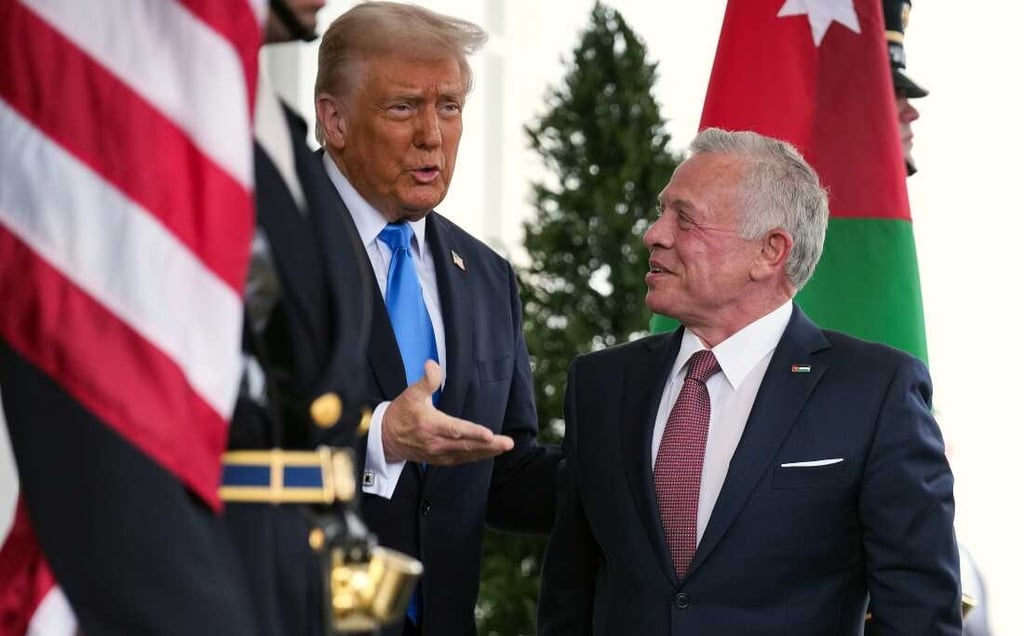Palestine: Why Does Trump Want Gaza? The Reality and Stakes Behind His Proposal
Trump says Gaza would be "turned over" to the U.S. by Israel when the conflict is over. This bold statement has ignited a firestorm of reactions, raising crucial questions about its feasibility and consequences. How likely is this bold plan to come to fruition? What would its consequences be for the world? And most importantly, what does Trump really want with Gaza?
PALESTINE
Ekaterina Romanenko
2/24/20254 min read


Donald Trump’s statement that the Gaza Strip would be turned over to the United States by Israel at the conclusion of fighting has sent shockwaves across political and business landscapes worldwide. Coupled with his vision of resettling Palestinians in "far safer and more beautiful communities" and transforming Gaza into a "Middle Eastern Riviera," the proposal has ignited fierce debate over its feasibility, motivations, and potential consequences.
While United States Secretary of State Marco Rubio described the proposal as a "generous step" aimed at preventing Hamas’s resurgence and fostering lasting peace, the reaction from Middle Eastern states and Palestinian factions was swift and unequivocal. Both Hamas and Fatah condemned the idea of relocating Gaza’s population. Yemeni Houthi spokesperson Mohammed al-Bukhaiti denounced Trump’s remarks as proof of American "arrogance," while Saudi Arabia reiterated that normalising relations with Israel hinges on the creation of a Palestinian state.
In response to Trump's provocative statements, Arab countries are convening an extraordinary summit of the League of Arab States, scheduled to take place on 27 February 2025, in Cairo. The Egyptian Ministry of Foreign Affairs stated that the summit will discuss "the latest developments regarding Palestine, which pose a serious danger," including United States and Israeli plans aimed at changing the status of Gaza and resettling Palestinians.
Trump’s proposal, however, is more than a mere diplomatic outburst. Historically, he has leveraged provocative rhetoric to shape public discourse, rally his political base, and pressure international actors. Analysts suggest that one strategic motive behind this statement is to solidify United States-Israel ties, reinforcing America's unwavering support amid ongoing regional tensions. By aligning with Israeli interests, Trump underscores his administration’s commitment to Israeli security, while also distinguishing his foreign policy from previous United States administrations. This approach bolsters his image as a leader unafraid of unconventional solutions.
Another plausible motive is the desire to shift focus from domestic challenges by introducing a bold international initiative that diverts attention from internal issues. This allows Trump to portray himself as a proactive global negotiator, while simultaneously bolstering domestic political support. For Trump’s political base, which often prioritises strong United States-Israel relations and a tough stance on terrorism, such rhetoric reinforces his image as a defender of American interests. Moreover, by framing Gaza’s redevelopment as a United States-led humanitarian and economic initiative, Trump aligns the proposal with his broader "America First" agenda, appealing to voters sceptical of prolonged foreign aid.
Economic interests also loom large in the background. The Eastern Mediterranean, including areas off the coast of Gaza, is believed to hold significant natural gas reserves. Developing these resources could potentially reduce European dependence on Russian energy supplies, aligning with broader geopolitical strategies. This energy dimension underscores the economic incentives underpinning Trump’s controversial proposal.
Nevertheless, despite its headline-grabbing nature, the feasibility of the United States assuming control over Gaza and relocating its 2 million residents remains highly questionable. The logistical, political, and ethical challenges are immense. Any attempt to impose such a solution would almost certainly face widespread international condemnation, as Trump’s proposals would entail detaching part of the Gaza Strip from Palestinian territory. This contradicts the principle of Palestinian territorial integrity, recently reaffirmed by the International Court of Justice based on a series of United Nations Security Council and General Assembly resolutions. Furthermore, such a move would almost certainly escalate tensions in the Middle East. Arab countries remain unwilling to host Palestinians due to perceived threats to their own security. "This is not a humanitarian issue; it is a matter of maintaining statehood in countries that might take in 1.5 to 2 million Palestinians," stated the deputy head of the Russian Diplomats Association.
For the global business community, the primary concern lies not in the potential transformation of Gaza itself but in the broader implications of Trump’s rhetoric. His statement has already heightened regional tensions. Investors and multinational corporations operating in the Middle East now face increased uncertainty, with heightened geopolitical risks potentially leading to capital flight and delayed infrastructure projects.
One of the most pressing concerns is the impact on energy markets. Historical examples demonstrate that regional instability can significantly affect global energy prices. For instance, following Iraq’s invasion of Kuwait in 1990, Brent crude oil prices surged from $15 to $41.15 per barrel, causing considerable disruption in global supply chains. After the Gulf War ended, prices eventually returned to $17-18 per barrel.
In addition to the energy sector, rising tensions in the region could negatively affect foreign direct investment (FDI). Political instability often results in a decline in FDI as investors seek to minimise risk. During the "Arab Spring," FDI flows to the region had already begun decreasing during the 2008-2009 crisis, and subsequent events further exacerbated this trend. The reduction in investment slows infrastructure development and limits economic opportunities, which, in the long run, could undermine efforts to rebuild and develop the region.
Moreover, the impact of information warfare accompanying such statements cannot be ignored. Experts have already warned that Trump’s proposal threatens the fragile ceasefire agreement between Israel and Hamas. Information campaigns spreading various interpretations of Trump’s statements could intensify opposing views both within Israel and the Palestinian Authority. Opponents of the proposal might argue that any attempts to alter the status quo would be seen as interference in domestic affairs and the violation of people’s rights, leading to increased discontent and protests. Conversely, proponents of the initiative might use rhetoric emphasising economic benefits and regional security.
Communication difficulties and deep-seated distrust, fuelled by such informational attacks, could only increase resistance from the international community, leading to further escalation. Even if Trump’s proposal never materialises, its ripple effects are already evident. Geopolitically, it has strained relations between Israel and Arab nations, complicating efforts to normalise diplomatic ties. For businesses, the resulting uncertainty has intensified concerns over energy supply disruptions, rising operational costs, and investment risks.
As history has shown, instability in the Middle East rarely remains contained. The interplay between diplomacy, economics, and information warfare ensures that the impact of such statements extends far beyond Gaza’s borders—reshaping global markets and compelling both policymakers and investors to navigate an increasingly volatile landscape.


